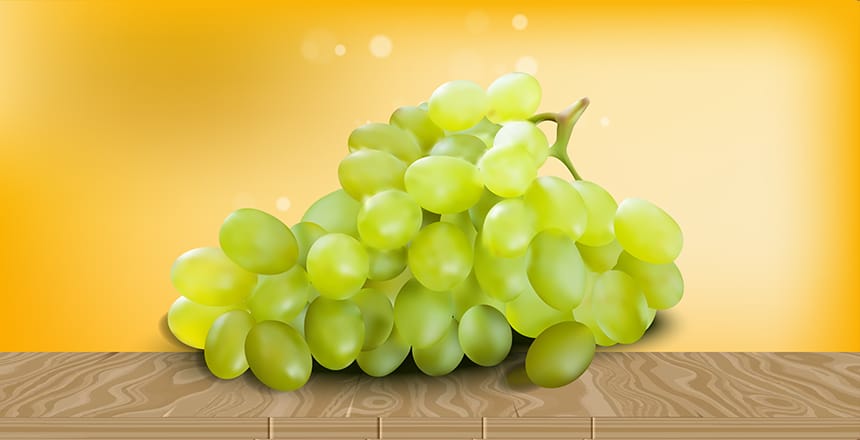If you’re looking for something truly special and delicious, sweet white wines should definitely be at the top of your list! But do you know exactly what is sweet white wine? Generally speaking, it is a white wine with a noticeable sweet taste due to the amount of unfermented sugar left in the bottle.
Keep reading to dive into what is sweet white wine, what makes it so desirable, how it can be enjoyed best, as well as some recommendations you may wish to try.
Related:
- How Many Liters Are in a Bottle of Wine
- What Does the Aperitif Ouzo Smell Like
- Is Chardonnay Sweet Or Dry
- White Wine Vinegar and White Vinegar
- Champagne Alcohol Content
- Is Champagne Gluten Free
Contents
- What is Sweet White Wine?
- How Is Sweet White Wine Made?
- How to Determine Wine Sweetness?
- White Wine Sweetness Level
- How to Increase White Wine Sweetness?
- What are the Differences Between Sweetness and Fruitness in Sweet White Wine?
- What are the Benefits of Drinking Sweet White Wine?
- How to Use Sweet White Wine?
- Sweet White Wine Types
- Best Sweet White Wine for Beginners
- Best Sweet White Wine for Cooking
- FAQs
- Final Thought
What is Sweet White Wine?
To begin with, let’s explore what is sweet white wine. Sweet white wine is a kind of wine produced by gradually pressing and fermenting grapes to produce a drink with rich, intense tastes. It is distinguished by the sweetness and strong fruity tones in contrast to other varieties of wine, which often have dry or semi-dry profiles.
How Is Sweet White Wine Made?

The first step in creating a sweet white wine is to carefully press and ferment grapes that have been selected for their robust flavor and intense fruity aroma. After undergoing the fermentation process, the wine is typically aged to allow the flavors to come alive fully. The aging process may include using oak barrels, low temperatures, or other techniques depending on the preferences of the winemaker.
After the fermentation process and aging, the winemaker then decides how much sweetness to leave in the bottle. This usually involves leaving some residual sugar in the wine for an added dimension of flavor and texture.
How to Determine Wine Sweetness?

To determine the sweetness of a white wine, you will need to look for sugar content and acidity. The sugar content will determine how sweet your wine is, and the acidity will help balance out the sweetness.
The sugar content is determined by the amount of sugar left in the wine after fermentation, called residual sugar (RS). RS is measured in grams per liter (g/L), 10 grams equals 1% of wine sweetness. Therefore, the higher the RS, the sweeter the wine. In general, a sweet white has at least 45 g/L of RS.
The acidity of a wine is also measured in grams per liter (g/L), and it helps balance the sweetness. Without enough acidity, a wine can start to taste very cloyingly sweet and flat. Generally, the lower the white wine acidity levels, the more noticeable sweetness and vice visa.
White Wine Sweetness Level
Sweet white wine has a wide range of sweetness levels, from off-dry (the lowest sweet level) to lusciously sweet styles like dessert wines.
Off-Dry: This is the least sweet style of white wine and is often characterized by a subtle sweetness with noticeable fruit flavors. It is typically enjoyed as an aperitif or light meal accompaniment.
Semi-Sweet: These wines are slightly sweeter than off-dry whites, with a mild sweetness and noticeable fruity flavors. They often make great accompaniments to fish or poultry dishes.
Sweet: Sweet white wines have a noticeable sweetness, but the acidity still balances it in the wine. They are typically enjoyed as an aperitif or dessert wine.
Very Sweet: These styles of wines are very sweet and have a rich, syrupy texture. They are usually enjoyed with desserts or as a standalone treat.
How to Increase White Wine Sweetness?
Many techniques are used to increase white wine’s sweetness, including the traditional method, Botrytis Cinerea, and freezing the grapes.
The traditional method is boosting the grapes’ sugar content before fermentation by harvesting considerably later than normal and letting to partially dry in the sun. This concentrates the sugar and enables the moisture in the grapes to evaporate. Similarly, when the grapes are harvested, they can dry on trays or hung in attics to keep them out of the rain.
Another method of increasing sweetness is known as Botrytis Cinerea. This process involves the growth of a desirable fungus called Botrytis cinerea on the outside of the grapes. The fungus will draw out the water from the grape, leaving more sugar and stronger flavors behind.
Finally, another way to increase sweetness is by freezing grapes. Freezing grapes has been used for centuries in some climates where temperatures drop low enough during specific times of year to freeze grape juice still in its skins. By removing the frozen juice from its skins, winemakers can make sweeter wines with higher sugar levels than usual.
What are the Differences Between Sweetness and Fruitness in Sweet White Wine?
Although sweetness and fruitiness can be related in sweet white wine, the two terms refer to different characteristics.
Sweetness refers to the amount of residual sugar left in the bottle after fermentation and is typically measured using grams per liter (g/L). Sugar content affects how sweet a wine tastes, with higher levels leading to sweeter wines.
Fruitiness, on the other hand, refers to the aroma and flavor notes. These notes are typically described as tropical fruits, orchard fruits, citrus fruits, stone fruit, etc. Depending on the varietal and terroir of the grapes used to make the wine, these notes can be more or less prominent in a bottle.
While sweetness and fruitiness are related, it is important to note that a wine can be sweet yet not very fruity, or vice versa. In some cases, the two characteristics may be balanced to create a well-rounded experience in the bottle.
What are the Benefits of Drinking Sweet White Wine?
There are many benefits of drinking sweet white wine. First, because of its higher sugar content, sweet white wine can provide a more intense flavor than other types of wines. Additionally, it can be easier to pair with food due to its natural sweetness and balanced acidity.
Finally, sweet white wine is generally lower in alcohol content compared to red wone or dry white – making them an excellent choice for those looking to enjoy a glass without the associated effects of being drunk.
How to Use Sweet White Wine?
You have known exactly what is sweet white wine and how to increase its sweetness, now let’s talk about how to use it. Sweet white wine can be used as an aperitif, a dessert wine, or even as an ingredient in cooking.
When used as an aperitif, the sweetness of sweet white wine will help stimulate your appetite and make the meal to come more enjoyable. It is also an excellent choice for cooking due to its ability to enhance flavors while providing balance and complexity. In addition, sweet white wine can be enjoyed as a dessert wine – with or without food – to round off a meal.
Moreover, it can be paired with a variety of dishes and desserts, from exotic fruit salads to creamy cheesecakes. Sweet white wine can be used as an ingredient in cocktails too – adding complexity and sweetness to your favorite drinks.
Sweet White Wine Types
There are many different types of sweet white wine. Some popular varieties include Moscato, Reisling and Sauternes.
Moscato is an aromatic white wine with low levels of alcohol, intense aromas of flowers and ripe fruit, and a sweet flavor profile. It is usually served slightly chilled or at room temperature to bring out the flavors.
Riesling is another popular sweet white wine variety characterized by its crisp acidity and aromas of ripe stone fruit and citrus aromas. The sweetness ranges from medium to sweet, with the most notable characteristic being the nose of dried apricots, honey, and tropical spices.
Lastly, Sauternes is a French dessert wine made from grapes affected by Botrytis Cinerea. It has a golden-yellow color and intense apricot, honey and spices aromas. Its sweetness level is very high, often with more than 200 g/L of residual sugar.
Best Sweet White Wine for Beginners
If you are looking for a good place to start with sweet white wine, look no further than Moscato. With its low alcohol content and intense sweetness, this wine will surely please even the most novice of palates. Its aromas of flowers, ripe fruits, and honey make it an excellent choice for pairing with desserts or even as an aperitif.
Best Sweet White Wine for Cooking
For those looking to use sweet white wine in cooking, Riesling is an excellent choice. Its crisp acidity and aromas of stone fruits and citrus make it a great addition to many dishes.
Additionally, its sweetness makes it perfect for balancing out rich dishes or adding complexity to sauces and marinades.
FAQs
What Type of White Wine is Sweet?
There are many types of sweet white wine, but some of the most popular varieties include Moscato, Riesling, and Sauternes.
Which is Sweeter Chardonnay or Pinot Grigio?
Chardonnay is typically sweeter than Pinot Grigio, as it has a higher sugar content due to its long aging process.
Is Moscato The Sweetest Wine?
Moscato is a very sweet wine, but some other varieties, such as Riesling and Sauternes can also be quite sweet.
How do You Choose Sweet White Wine?
When selecting a sweet white wine, the Alcohol By Volume (ABV) and residual sugar (RS) levels can be key sweetness indicators. Wines with lower ABV and higher RS tend to be sweeter, while those with higher ABV and lower RS will be drier. Moscato, Riesling, and Sauternes are all good choices for sweet white wines, as they typically have ABV levels between 8-14%.
It is also helpful to read expert tasting notes and reviews from other customers to understand the flavor profile better.
How do You Serve White Wine for Beginners?
For those just starting to explore white wines, it is best to start with sweeter varieties such as Moscato. This can be served slightly chilled or at room temperature to bring out the flavors. Sweet white wines are also excellent for pairing with desserts and other sweet dishes, as well as for adding complexity and sweetness to cocktails.
Which is sweeter, Chardonnay or Sauvignon?
Sauvignon Blanc is typically less sweet than Chardonnay, as it has lower sugar content. However, some styles of Sauvignon can be quite sweet and can rival the sweetness of Chardonnay.
Final Thought
In conclusion, sweet white wines can come in a variety of styles and tastes, including many different grape varietals. Whether you are looking for something crisp and refreshing like a Riesling or something more decadent like a Sauternes, there will surely be a sweet white wine for everyone.
When selecting your wine, be sure to take into account the ABV and RS levels as well as tasting notes. With all this information, you can confidently choose the perfect sweet white wine for any occasion!
